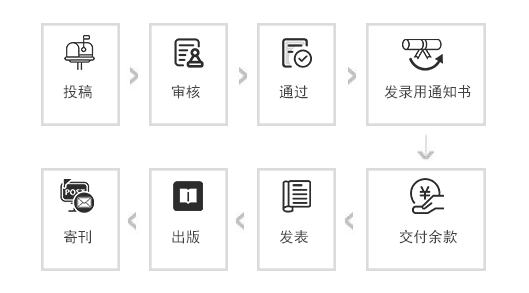Structural Dynamics-US



- 中国知网数据库(CNKI)全文收录期刊
- 中国核心期刊(遴选)数据库收录期刊
- 中国万方数据库全文收录期刊
- 中国维普科技期刊数据库收录期刊
- 中国龙源数据库全文收录期刊
- 中国期刊网全文收录期刊



中国高校科技期刊研究会第9次会员代表大会在北京召开,中宣部出版局副局长张怀海、教育部科学技术与信息化司一级巡视员张国辉等领导出席会议并发表..
英文简介:Structural Dynamics focuses on the recent developments in experimental and theoretical methods and techniques that allow a visualization of the electronic and geometric structural changes in real time of chemical, biological, and condensed-matter systems. The community of scientists and engineers working on structural dynamics in such diverse systems often use similar instrumentation and methods.The journal welcomes articles dealing with fundamental problems of electronic and structural dynamics that are tackled by new methods, such as:Time-resolved X-ray and electron diffraction and scattering,Coherent diffractive imaging,Time-resolved X-ray spectroscopies (absorption, emission, resonant inelastic scattering, etc.),Time-resolved electron energy loss spectroscopy (EELS) and electron microscopy,Time-resolved photoelectron spectroscopies (UPS, XPS, ARPES, etc.),Multidimensional spectroscopies in the infrared, the visible and the ultraviolet,Nonlinear spectroscopies in the VUV, the soft and the hard X-ray domains,Theory and computational methods and algorithms for the analysis and description of structuraldynamics and their associated experimental signals.These new methods are enabled by new instrumentation, such as:X-ray free electron lasers, which provide flux, coherence, and time resolution,New sources of ultrashort electron pulses,New sources of ultrashort vacuum ultraviolet (VUV) to hard X-ray pulses, such as high-harmonic generation (HHG) sources or plasma-based sources,New sources of ultrashort infrared and terahertz (THz) radiation,New detectors for X-rays and electrons,New sample handling and delivery schemes,New computational capabilities.中文简介:(来自Google、百度翻译)结构动力学着重于实验和理论方法与技术的最新发展,这些方法和技术可以实时可视化化学,生物和凝聚态系统的电子和几何结构变化。在这样不同的系统中从事结构动力学研究的科学家和工程师社区经常使用类似的仪器和方法。 该期刊欢迎通过新方法解决的有关电子和结构动力学基本问题的文章,例如: 时间分辨x射线和电子衍射与散射, 相干衍射成像, 时间分辨x射线光谱 (吸收,发射,共振非弹性散射等), 时间分辨电子能量损失谱 (EELS) 和电子显微镜, 时间分辨光电子能谱 (UPS,XPS,ARPES等), 红外,可见光和紫外线的多维光谱, VUV的非线性光谱,软x射线域和硬x射线域, 用于分析和描述结构动力学及其相关实验信号的理论和计算方法和算法。 这些新方法是由新仪器启用的,例如: x射线自由电子激光器,提供通量,相干和时间分辨率, 超短电子脉冲的新源, 超短真空紫外线 (VUV) 到硬x射线脉冲的新源,例如高谐波产生 (HHG) 源或基于等离子体的源, 超短红外和太赫兹 (THz) 辐射的新源, x射线和电子的新探测器, 新的样品处理和传递方案, 新的计算能力。










英文简介:Structural Dynamics focuses on the recent developments in experimental and theoretical methods and techniques that allow a visualization of the electronic and geometric structural changes in real time of chemical, biological, and condensed-matter systems. The community of scientists and engineers working on structural dynamics in such diverse systems often use similar instrumentation and methods.The journal welcomes articles dealing with fundamental problems of electronic and structural dynamics that are tackled by new methods, such as:Time-resolved X-ray and electron diffraction and scattering,Coherent diffractive imaging,Time-resolved X-ray spectroscopies (absorption, emission, resonant inelastic scattering, etc.),Time-resolved electron energy loss spectroscopy (EELS) and electron microscopy,Time-resolved photoelectron spectroscopies (UPS, XPS, ARPES, etc.),Multidimensional spectroscopies in the infrared, the visible and the ultraviolet,Nonlinear spectroscopies in the VUV, the soft and the hard X-ray domains,Theory and computational methods and algorithms for the analysis and description of structuraldynamics and their associated experimental signals.These new methods are enabled by new instrumentation, such as:X-ray free electron lasers, which provide flux, coherence, and time resolution,New sources of ultrashort electron pulses,New sources of ultrashort vacuum ultraviolet (VUV) to hard X-ray pulses, such as high-harmonic generation (HHG) sources or plasma-based sources,New sources of ultrashort infrared and terahertz (THz) radiation,New detectors for X-rays and electrons,New sample handling and delivery schemes,New computational capabilities.中文简介:(来自Google、百度翻译)结构动力学着重于实验和理论方法与技术的最新发展,这些方法和技术可以实时可视化化学,生物和凝聚态系统的电子和几何结构变化。在这样不同的系统中从事结构动力学研究的科学家和工程师社区经常使用类似的仪器和方法。 该期刊欢迎通过新方法解决的有关电子和结构动力学基本问题的文章,例如: 时间分辨x射线和电子衍射与散射, 相干衍射成像, 时间分辨x射线光谱 (吸收,发射,共振非弹性散射等), 时间分辨电子能量损失谱 (EELS) 和电子显微镜, 时间分辨光电子能谱 (UPS,XPS,ARPES等), 红外,可见光和紫外线的多维光谱, VUV的非线性光谱,软x射线域和硬x射线域, 用于分析和描述结构动力学及其相关实验信号的理论和计算方法和算法。 这些新方法是由新仪器启用的,例如: x射线自由电子激光器,提供通量,相干和时间分辨率, 超短电子脉冲的新源, 超短真空紫外线 (VUV) 到硬x射线脉冲的新源,例如高谐波产生 (HHG) 源或基于等离子体的源, 超短红外和太赫兹 (THz) 辐射的新源, x射线和电子的新探测器, 新的样品处理和传递方案, 新的计算能力。
来稿要求:
论点新颖、论证严密、论据充足、文字精练。论文字数:5000字符-8000字符为宜,图表也要计算在内,不包括英文摘要关键词。
标 题:
文章标题要言简意赅,30字以内。作者署名:署真实姓名,注明作者单位、单位所在省市和邮政编码。摘 要:要用第三人称概括全文,300字以内。
关 键 词:
用3~8个关键词术语反映论文主题。专用符号:名词、术语、数字、计量单位、标点符号和数学符号等,必须符合国家标准;外文人名、地名和术语需译成中文。
图表格式:
文中插图与表格放在相应正文之后,分别按出现顺序用图1、图2或表1、表2统一编号。插图应为黑白色,其序号、标题及注释居中放在图的下方,表格的序号及标题置于表格上方,表注放在表格的下方(建议:由于篇幅限制,除核心期刊外尽量不用或少用图表)。
正文注释:
采用尾注形式,注释号①,②,③等标在相应正文右上角。
章节体例:
章节标题为:一级标题不编号,用黑体居中排,二级标题不编号,用楷体放在相应的文字段首与正文空一字格接排正文。 三级标题分别用1.2.3.顺序编号。文中接排标题用(1),(2)编号。
参考文献:
参考文献置于正文之后,近5年的不少于3条,用[1],[2]……顺序编号,如文章中有内容需要解释请用尾注形式。参考文献不全者不能进入审稿阶段。{参考文献格式如下:(1)图书:作者.书名(版本)[M].出版所在地: 出版社,出版年:(1)页码.
(2)期刊:作者.题目[J].期刊名,年,卷(期):页码.
(3)电子参考文献:作者.题目[OL].(文章的发表日期).[本文引用日期].作者简介:来稿者请附个人简介,内容包括姓名(出生年—),性别,籍贯,民族,学历,工作单位,职称,研究方向,通讯地址,联系电话及电子信箱。
一般情况下,您将在3个工作日内收到审稿结果。如文章有很强的时效性,请说明需要最晚刊发时间。
| 论文编号 | 作者姓名 | 论文题目 | 录用情况 |
|---|---|---|---|
| TG251-13579 | 韩丽炘 孟涛 温娟娟 刘晓琴 | 基于互联网的CBL+TBL教学法在病理学实验教学中的应用 | 已录用 |
| TG251-13681 | 邹隆强 杨清余 钟鸿路 李正南 陈 | 医学运动康复联合消肿止痛方治疗急性踝关节扭伤临床研究 | 已录用 |
| TG251-13794 | 林雨慧 陈霄雯 郑颖彦 朱永凯 贾 | 基于SWOT模型的儿童专科医院临床研究发展策略分析 | 已录用 |
| TG251-13762 | 郑鸿雁 | 重复经颅磁刺激治疗肝脾不调型功能性肛门直肠痛的临床研究 | 已录用 |
| TG251-13891 | 袁召1 赵会谢2 赵海深3 | 真武汤治疗阳虚水泛型慢性心力衰竭患者的临床研究 | 已录用 |
| TG251-13536 | 王杰1 张蕾蕾2 | 血脂和载脂蛋白水平与分化型甲状腺癌及其病理学特征的相关性探究 | 已录用 |
| GD24-5203 | 单一青 高鹏慧 姚瑶 | 思维导图护理对宫颈癌患者行腹腔镜术后康复的影响 | 已录用 |
| GD24-5217 | 林秀娟 梁静文 刘美仙 陈惠贤 | 加速康复外科管理模式在胸腔镜肺段切除术患者围手术期护理中的应用效果 | 已录用 |
| GD24-5213 | 杨素雯 何洁芳 陈妙霞 廖景升 | 健康行为改变整合理论对于宫颈癌晚期放疗患者依从性及自我效能的影响 | 已录用 |
| GD24-5199 | 杨月惠 王凤婷 | 个体护理计划在心脏瓣膜置换手术围手术期患者中的应用 | 已录用 |
邮箱:cnkibianjibu@163.com
QQ:
扫码联系: